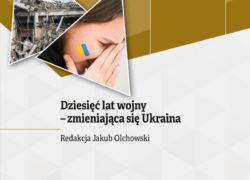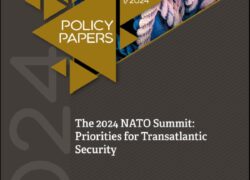The Russian-Ukrainian war has initiated a strategic shift in Slovakia, moving away from the reliance on natural gas supplies from the Russian Federation. In this new geopolitical context, Slovakia’s challenge lies in securing alternative sources of this commodity, rather than in developing infrastructure, which has already been established over the years and currently facilitates the importation of natural gas from various directions. A significant milestone will be the expiration of the Russian-Ukrainian transit agreement at the beginning of 2025. Consequently, the government in Bratislava is actively engageded in negotiations to secure natural gas imports from Azerbaijan, among other potential suppliers.
Importance of natural gas in the economy. In Slovakia, the demand for natural gas is approximately 5 billion cubic metres (bcm) per year, with domestic production accounting for a mere 1% of this total. Prior to the onset of the full-scale Russian-Ukrainian war in 2022, nearly all of Slovakia’s imported natural gas was supplied by the Russian Federation under a contract valid until 2028. This heavy dependency, coupled with a lack of immediate alternative supply options, has compelled Slovakia to pay for this commodity in Russian rubles, in accordance with a mechanism implemented in 2022. Natural gas is vital to Slovakia’s economy, serving multiple sectors. It accounts for 40% of household energy consumption and is crucial for industrial use (27%), including electricity and heat generation. Furthermore, Slovakia plays a significant role as a transit country, facilitating the supply of natural gas from the Russian Federation to Czechia and subsequently to other Western European countries. In 2019, approximately 92% of the natural gas transported through Slovakia was in transit, generating substantial revenue. However, in 2023, transit volumes decreased to around 17 bcm, two-thirds less than in 2022, reflecting ongoing geopolitical and market shifts. The war has significantly reduced natural gas transit through Slovakia, as many companies from European Union countries have voluntarily ceased importing natural gas from Russia or have refused to comply with the obligation to settle transactions in rubles. Concurrently, Russia has halted natural gas supplies through the Nord Stream 1 pipeline (destroyed in September 2022) and the Yamal-Europe pipeline, while also reducing shipments through Ukraine. Instead, Russia now increasingly relies on the TurkStream pipeline for its exports. Further reductions in transit via Ukraine and Slovakia are anticipated due to several factors. The current Russian-Ukrainian transit agreement is set to expire at the end of December 2024. Additionally, the potential introduction of sanctions on the import of natural gas from Russia by land and sea – which is possible in the next sanctions package – could further impact transit volumes.
Existing infrastructure connections. Slovakia possesses robust infrastructure for importing natural gas from multiple directions, an expansion largely driven by the natural gas crisis in 2009, when Russian-Ukrainian tensions led to the suspension of supplies to many EU countries. Since then, Slovakia has established reverse flow connections in all directions: with Czechia at the Lanžhot point (2010), Austria at the Baumgarten point (2011), Hungary at the Veľké Zlievce point (2015), and Ukraine at the Budince point (2016). Additionally, interconnectors were built with Hungary (2015) and Poland (2022). In the current geopolitical situation, Slovakia can import natural gas from the east, south, and north. Key sources include regasification terminals on Krk Island in Croatia and terminals in Greece, as well as terminals in Świnoujście, Poland, and Klaipėda, Lithuania. Thus, the infrastructure now supports natural gas imports from all neighbouring countries. A particularly significant development was the commissioning of the Poland-Slovakia interconnector in August 2022, which facilitates natural gas supplies from Poland and Lithuania, including from their LNG terminals. This pipeline, part of the North-South Gas Corridor, enhances supply security by ensuring diversification and serving as a backup in case of disruptions in existing contracts. (“IEŚ Commentaries”, no. 655).
Azerbaijan as a new energy partner. Natural gas imports to Slovakia are secured through several contracts. In the past, the dominant contract was with Russia’s Gazprom. However, since the outbreak of the Russian-Ukrainian war, as part of the diversification process, the energy company SPP (Slovenský plynárenský priemysel a.s.) has also concluded contracts with BP (until 2024) and ExxonMobil, Shell, ENI and RWE (also until 2024). In the future, the lack of transit of Russian natural gas through Ukrainian territory – which is already practically a foregone conclusion, given the position of the government in Kiev and the lack of Russian-Ukrainian talks on the extension of the 2019 agreement – will negatively affect Slovakia’s energy security level (the need for alternative supplies). Under these circumstances, the government in Bratislava began talks with Azerbaijan. In May 2024, Slovak Prime Minister Robert Fico travelled to Baku to discuss potential natural gas supplies from this direction via existing infrastructure. In this arrangement, two supply options could be considered. The first is to use the reverse on the Trans-Balkan gas pipeline, which is already used to supply natural gas to Bulgaria, among others, as well as Moldova (“IEŚ Commentaries”, no. 1124). The second is the use of Russian infrastructure. In this case, Azerbaijan would supply natural gas to Russia, and then route it through Ukraine to Slovakia. Taking into account the lack of transit starting in 2025, using this direction does not seem plausible. Nevertheless, interestingly, according to Prime Minister Fico, “the next steps towards securing supplies will depend on talks between companies from Russia, Ukraine and Azerbaijan on prices and terms of supply”[1]. Thus, according to the Slovak government, potential natural gas supplies from Azerbaijan are contingent on reaching an agreement with Russia.
Conclusions
- Azerbaijan’s significance to the energy security of European Union countries has grown markedly following the onset of Russia’s full-scale war with Ukraine in 2022 (“IEŚ Commentaries”, no. 937). Under an agreement with the European Commission, Azerbaijan has committed to increasing its natural gas exports to EU countries to 20 bcm per year by 2027. In 2023, Azerbaijan’s total natural gas exports rose by 5.3%, with a 3.5% increase to Europe, reaching 11.8 bcm against a planned 12 bcm for 2024. Currently, Azerbaijan exports natural gas to eight EU countries, and Slovakia is set to become the ninth. Political-level discussions have laid the groundwork for this cooperation, and according to the Slovak government, only technical issues remain to be resolved.
- There are contradictory signals in statements and information available after Slovak Prime Minister Robert Fico’s visit to Baku. The 2023 Solidarity Ring (STRING) agreement provides for the use of existing infrastructure in Central European countries to increase natural gas supplies from Azerbaijan to countries in the region. Under these conditions, it would be natural to use the reverse on the Trans-Balkan gas pipeline due to the existing technical capabilities. However, Prime Minister Fico’s statements that Russia would be involved in the talks on importing natural gas to Slovakia undermine the purpose of using this export channel.
- For Slovakia, its transit location means that maintaining natural gas supplies is extremely important in terms of both ensuring energy security and budget revenues. Accordingly, the Bratislava government is in talks with European partners (including Austria, the Czech Republic, Italy, etc.) to either maintain natural gas supplies from Russia (unlikely given the end of the transit agreement) or to secure them from Azerbaijan as well (supplies of 5-10 bcm per year are mentioned). The chances of greater availability of natural gas from Azerbaijan will only increase if the Trans-Balkan pipeline is used. Recent events in Slovakia, i.e., the assassination of Prime Minister Robert Fico (“IEŚ Commentaries”, no. 1126), should not affect energy policy or efforts to increase the security and availability of natural gas in the region, including sfrom Azerbaijan.
[1] B. Gedeon, Slovakia moves ahead to receive gas from Azerbaijan through Ukraine, 17 May 2024, https://ceenergynews.com/oil-gas/slovakia-moves-ahead-to-receive-gas-from-azerbaijan-through-ukraine/ [23 May 2024].










